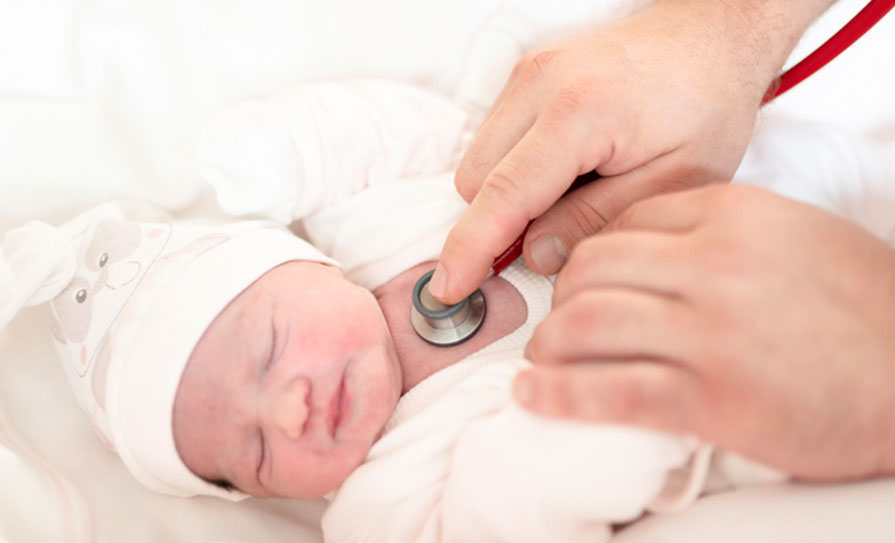
Attendees at the Irish Nephrology Society Annual Scientific Meeting 2024 heard an engaging talk about the development, coordination, and “human perspective” of paediatric transplant in Ireland by Ms Dilly Little, Consultant Transplant Surgeon, National Kidney Transplant Service at Beaumont Hospital, Dublin. Ms Little was described as “a friend of paediatric nephrology” and a “cornerstone of the service” by session Chairperson Dr Michael Riordan, Consultant Nephrologist, Children’s Health Ireland.
Ms Little began with a retrospective look at the evolution of the Irish paediatric transplant service. She presented a case study of “one of the longest surviving living donor transplants”, who received a kidney from her mother in the 1970s, and has gone on to have a healthy adulthood and a number of successful pregnancies. The patient “benefited hugely from this transplant”, Ms Little said, “that’s the human side of what can happen when a successful transplant is completed.”
Presenting overall transplant activity since the first adult surgery in 1964, Ms Little said, “we are trying to grow the living donor transplants, which certainly is challenging,” adding that the 150 to 160 total transplants, and seven to 10 paediatric transplants, taking place each year are predominantly from deceased donors.
“We are also supporting the national kidney transplant service and the pancreas transplant service which is in St Vincents’s University Hospital. The team travels from Beaumont to Vincent’s. We are also anticipating a paired exchange programme through our colleagues in the UK, particularly Belfast and Coventry.”
Returning to paediatric transplant, delegates heard that despite reasonably short waiting lists – averaging at 11 months for living donation and 14 months for deceased – children are “having difficulty going to school and attaining developmental milestones”, among myriad other burdens, while waiting for transplantation. “The majority of these children are on dialysis,” Ms Little told the conference. “But we do try to do more pre-emptive transplants for paediatrics.” She also described the difficulties of transporting children to Dublin or Galway for dialysis three-times weekly, saying the process “is hugely disruptive, not only to the child, but to the entire family and other siblings”. Describing “logistic challenges”, she added that “the living donor nephrectomy is always done in Beaumont Hospital, which involves the team getting transport with the kidney that they’ve just taken from the living donor and going down to Temple Street to do the transplant”.
“We have a very significant number of re-transplants in the national programme,” Ms Little continued, and presented outcome data showing a median survival of a first-time transplant from a deceased donor of 16 years. She described kidney failure and transplantation as “a lifetime project”, emphasising this needs to be considered when planning care for this patient group.
“While we are celebrating paediatric transplant, we have to be cognisant of the overall plan for children who are going to develop and grow into a lifetime of renal impairment and renal failure. So, we have to recognise how we are going to plan for that, even from the first kidney transplant.”
The final section of Ms Little’s talk contained peri-operative images and insight into the complexity of paediatric transplant surgery, which she described as “hugely challenging and hugely rewarding”. The discussion included difficulties such as size mismatches between a child and adult kidney. She added “we don’t transplant children’s kidneys into children” in view of issues such as immune system development, thrombosis risk, and “smaller nephral mass that does not tolerate high levels of immunosuppression”.
“In infants there’s clearly significant challenges – clamping the aorta and the cava at the same time in a 10kg infant clearly poses huge challenges on the haemodynamic circulation of the child,” she said, and described both the multidisciplinary approach and technical intricacy involved in the surgery. “Frequently we are required to do additional surgery to make these children transplantable, to reconstruct the urinary tract or do a native nephrectomy to actually make space.” Ms Little then moved on to discuss paediatric organ donation, and provided a detailed overview, with accompanying images, of the en bloc kidney transplant procedure.
“Both kidneys, which are about the size of a broad bean, are left attached to the aorta and cava. We use the aorta and cava of the infant that has donated and transplant into an adult…. We typically transplant into low weight women, because in about six-to-eight weeks, the paediatric en bloc kidneys will actually hypertrophy into adult size. While they’re initially transplanted you want to maintain the function, and for the patient to be off dialysis they need to be low weight.”
Concluding with expression of gratitude to kidney donors and congratulations to her nephrology colleagues and all members of the transplant service, Ms Little also acknowledged some anticipated future challenges. These included improved transition from child to adult services and particularly in relation to the New Children’s Hospital.
“It is certainly going to be very challenging to provide paediatric transplant services across a very congested city from a logistic point of view. If this goes ahead, we’re going to be the only surgical service that will be completely remote from the actual paediatric centre. You can see the challenge, if there is an anastomotic bleed or other emergency, of getting a surgical team over from Beaumont to James’s Street in a timely fashion.”





Leave a Reply
You must be logged in to post a comment.